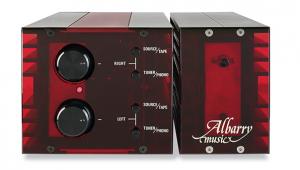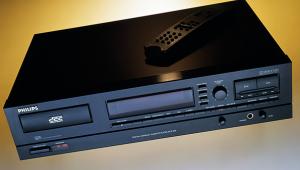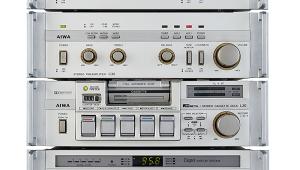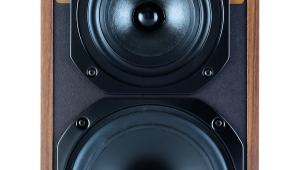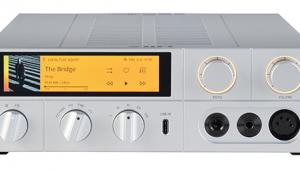Philips AG9016 tube amplifier Page 2
Normally there is no difficulty in connecting vintage equipment to modern systems, but this Philips amplifier is a definite exception. Most of the sockets were made to a now forgotten European standard and today the matching plugs are difficult to find. The turntable and tuner input plugs are especially rare, but the internal connections to the tape socket (a standard 5-pin DIN) are identical, so it is easiest to use this instead.
The loudspeaker outputs are via a pair of 3-pin sockets that fortunately accept 4mm plugs, although one has to be careful to position them correctly so that the internal shorting switches are disabled. Polarities are not marked and the original plugs are both symmetrical and reversible, making loudspeaker phasing a hit-and-miss affair.
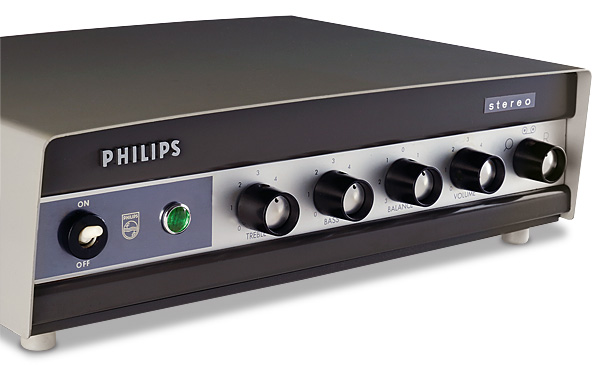
Information Overload
It is simpler when using modern plugs. For both channels the signal connection is at the top and the chassis ground is at the bottom. Needless to say, sensitive loudspeakers are a must, with 90dB/W/1m considered a sensible minimum. On the input side, the turntable connection was designed for a Philips high-output ceramic stereo cartridge and cannot be used with modern magnetic types. The overall sensitivity of the amp does suit line-level sources, though, and the volume control acts at the input to the first stage so overloading is impossible – not always a given with early equipment.
![]() Tim Listens
Tim Listens
Like many units that cross the line between 'audio' and 'hi-fi', the Philips AG9016 has a volume control with a simple loudness contour. This cannot be switched off and boosts the bass at low settings. It can be disabled by snipping a couple of connections inside the amp, but our sample was auditioned in its original state. In my view, the non-flat response that the compensation generates gives one carte blanche to fiddle with the treble and bass controls in order to approximate a tonal balance – something that would normally be frowned upon!
I found the unavoidable loudness compensation more of a hindrance than the amp's lack of power, the latter making less difference at sensible listening volumes than you might imagine. Yes, the AG9016 won't reproduce an orchestral crescendo with the same sense of bracing realism that, say, a 50W amplifier would be able to, and it can't pound out the massive bass lines of dance club music with any conviction at all, but for a pleasant evening of considered listening it really is quite alluring.
I found it necessary to have the treble control well advanced and the bass control slightly pulled back from its nominal centre position to achieve satisfactory results. Of course, advancing the volume setting diminishes the built-in bass-boost effect, but I still found it best to keep the bass backed off in view of the tiny output transformers and puny EL95 valves.
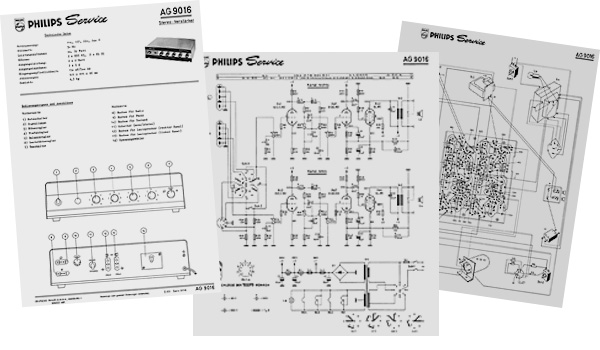
Smooth Talker
Some aspects of the design are very impressive, especially the level of audible hum and noise, which is minimal despite the position of the volume control in the signal path. Our sample, despite being completely original even down to its full set of Philips 'Miniwatt' valves, did not randomly click or pop either. This is often a problem with old valve amps in my experience.
I found the treble performance of the amplifier less favourable, however. In all instances it had a veiled quality, which suggests a limited top-end extension. Bass tightness was notably lacking too, but this comes as no surprise given the scale of the amplifier's construction. Between these two extremes, though, is a beautifully smooth and easy-to-listen-to midrange that I felt still (just) meets the requirements of high-quality reproduction. What I was listening to sounded as if it had been slightly enriched by distortion harmonics, but it was still beguiling in a way that transistor amplifiers frequently struggled to match in their first decade of production.
Keeping It Real
The Dave Brubeck Quartet's 'Strange Meadow Lark' [Time Out; Columbia CK 65122) sounded more 'authentic' through the AG9016 than it sometimes does through more sophisticated equipment. Smoothness and spaciousness were the key attributes, while there was an honest simplicity to how the music was presented that made it sound genuine – even if the percussion lacked any tangible degree of sparkle or bite.
Realistic sound levels could just about be achieved to represent the instruments and the way in which they were being played, suggesting that if you are into dinner jazz a 2W amplifier might be all you need. Similarly, Katie Melua's songs sound best when she's not shouting at you, so lots of power isn't required here either. 'Shy Boy' [Piece By Piece; Dramatico DRAMCD0007] displayed less vocal sibilance than usual, while Melua's voice was well separated from the various instruments.
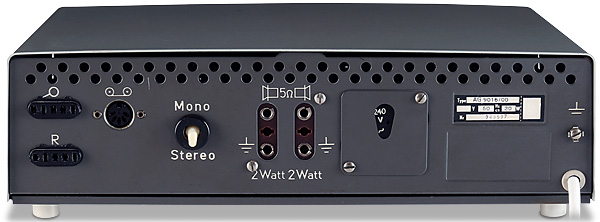
Centre presence was not as solid as can sometimes be achieved, but after a while that didn't seem to matter. In fact I listened to the whole album, and quite a few others afterwards, well into the small hours. While I would hesitate to recommend this amp for all systems and musical tastes, if you are an insomniac devotee of close-miked acoustic recordings, have thin walls and possess a bright-sounding pair of sensitive loudspeakers, then it may be just the thing!
Buying Secondhand
Recommissioning a valve amplifier of this age usually involves replacing what can seem like an endless list of components before power can be applied for the first time. The good news is that this is not generally required for the Philips AG9016 because the parts used were of excellent quality. The small capacitors, for example, aren't the traditional wax-and-paper types used in British equipment. Instead, they are the well respected Philips 'mustard' type, which seem to last virtually indefinitely.
Problems in the output stages tend to centre around the hard working EL95s, which can run into grid current and overheat in some cases. Carbonisation of the PCB under the valve holders is another potential issue. The other possible trouble area is the selenium rectifier, whose output can fall as it ages. A modern silicon alternative can be used as a replacement, but it is essential to add a suppressor across each diode and a ballast resistor in order to keep the HT voltage down to the correct level.
Hi-Fi News Verdict
Are two watts enough? Not really, but there are situations in which this surprising amplifier is still a joy to listen to. Clearly it is something for collectors rather than those seeking an amp to use as a main system component, but vintage valve amplifiers seldom come less obtrusive or easier to use than the AG9016. Start your search on the Continent, as there are very few of these in circulation in the UK.
